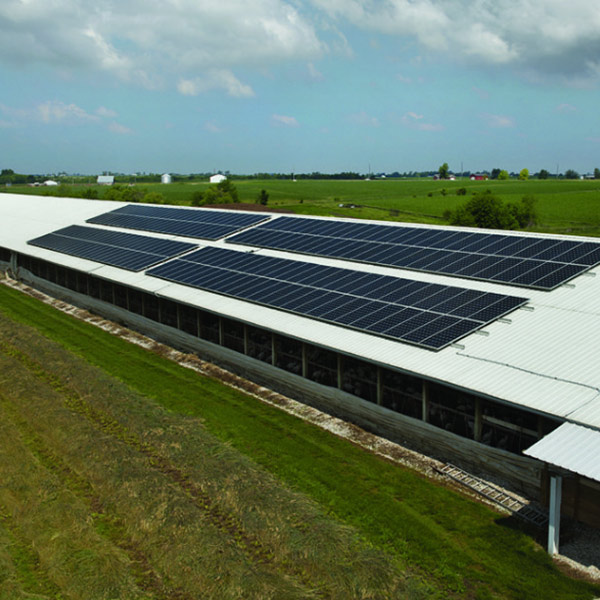NYISO stakeholders on Wednesday delayed a vote on the ISO’s proposal to procure up to 500 MW of additional reserves for Southeast New York (SENY) pending an additional cost analysis.
The Business Issues Committee tabled the proposal with a 68% roll-call vote on which many members abstained.
The ISO wants to procure up to 500 MW of additional 30-minute reserves in the SENY reserve region (zones G-K) as part of its Reserves for Resource Flexibility project. This proposal would increase SENY’s portion of the total statewide reserve requirement from 1,300 MW to 1,550 or 1,800 MW depending on the hour, said NYISO’s Ethan Avallone, who presented the proposal.
The proposal would shift current locational reserve procurements and would not increase the 2,620-MW procurement for the entire state.
The region’s current 30-minute reserves are used to bring transmission assets to emergency transfer criteria — below short-term emergency ratings — after suffering from the first worst contingency in SENY. The additional reserves would provide a market-based mechanism for obtaining resources to bring transmission assets to normal transfer criteria — below long-term emergency ratings — following a contingency, minimizing the need for ISO operators from having to employ out-of-market actions.
NYISO would procure an additional 250 MW for the hours beginning 6 and 22, with an additional 500 MW procured for hours beginning 7 to 21. There would be no increase for hours beginning 23 through 5.
Unlike the existing 30-minute reserves, which are priced at $500/MWh, the incremental reserves would have a shortage price of $25/MWh. “This lower shortage price recognizes that reserves procured for emergency transfer criteria are a higher relative priority than reserves procured for normal transfer criteria,” the ISO said.
Avallone noted that NYISO plans to increase the $25/MWh demand curve point to $40/MWh as part of its separate Ancillary Service Shortage Pricing proposal.
Amanda De Vito Trinsey, representing New York City, asked for the delay, complaining that while the ISO had estimated the cost of the $25/MWh to be about $300,000 annually, it had not provided an analysis on the impact of the $40/MWh price, which the city had requested at previous stakeholder meetings.
“You’re having us vote before we see the impact analysis [on the $40/MWh price], which defeats the whole point of having an impact analysis,” she said.
“You’re setting a very poor precedent,” agreed Erin Hogan of the New York Department of State’s Utility Intervention Unit.
“I can’t say it any better, but I do agree with Amanda and Erin on that point,” added Chris Hall of the New York State Energy Research and Development Authority.
Howard Fromer, representing Bayonne Energy Center, estimated the $40/MWh price would be no more than 60% higher than the $25/MWh price — a total of about $480,000 a year.
“I don’t quite understand … the call for more delaying,” he said. “We’re talking about noise.”
A NYISO spokesman said after the meeting that the ISO had not endorsed the stakeholders’ cost estimates.
Trinsey countered Fromer, saying that the ISO doesn’t expect to implement the program for two years. “Why are we being rushed to a vote before seeing an appropriate consumer impact analysis?” she asked.
Matt Schwall of the Independent Power Producers of New York, who noted the $40 price will be voted on separately, said delaying the vote on the $25 reserves could impact investment decisions. “We have developers in New York who are looking at making investments in facilities today to respond to changes in the system that are coming in the next couple years. Even a six-month delay … has serious consequences for investors moving forward.”
A stakeholder who asked not to be identified urged members to respect NYISO operators’ concerns, saying the ISO has leaned on “latent reserves” such as Indian Point, which will be completely shut down by April 2021 and peakers that will retire between 2023 and 2025.
“I am pretty appalled … that there appear to be parties that are going to take a stand against reliability because it might have a cost of $480,000” a year, said Mark Younger of Hudson Energy Economics, who represents generation owner Indeck Energy Services and other suppliers Mercuria Energy America and Eastern Generation.
“That’s a gross mischaracterization of what I said,” responded Hogan.
Andy Antinori of the New York Power Authority pressed ISO officials on how long it would take to conduct the analysis of the $40/MWh shortage price.
Avallone initially declined to answer, saying, “We do intend to move forward on the vote today.”
But Tariq Niazi, the ISO’s senior manager for consumer interest liaison, said information on the impact of the $40/MWh shortage price would be included as part of the impact analysis of the Ancillary Services Project, which the ISO hopes to present in August.
With that, Trinsey successfully moved to table the vote to recommend the proposal to the Management Committee.
Fromer said after the vote, however, that there is “precedent” for the MC considering proposals without a BIC recommendation.




